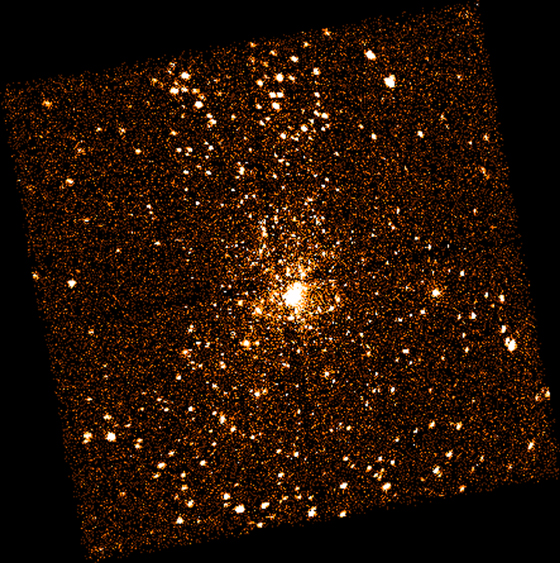Orion Nebula (Image and Text Credit: NASA/PSU) This X-ray image shows about a thousand X-ray emitting young stars in the Orion Nebula star cluster. The X rays are produced in the multimillion degree upper atmospheres of these stars. At a distance of about 1800 light years, this cluster is the closest massive star forming region to Earth. It is well-known in the night sky because it illuminates the Orion Nebula. The region shown in this image is about 10 light years across. The bright stars in the center are part of the Trapezium, an association of very young stars with ages less than a million years. The dark vertical and horizontal lines, and the streaks from the brightest stars are instrumental effects. Chandra X-ray Observatory Click here for a jpg version
IMAGES |
By Mission |
Stars |
HEASARC Home | Observatories | Archive | Calibration | Software | Tools | Students/Teachers/Public Last modified: Thursday, 26-Jun-2003 13:48:45 EDT HEASARC Staff Scientist Position - Applications are now being accepted for a Staff Scientist with significant experience and interest in the technical aspects of astrophysics research, to work in the High Energy Astrophysics Science Archive Research Center (HEASARC) at NASA Goddard Space Flight Center (GSFC) in Greenbelt, MD. Refer to the AAS Job register for full details. |

